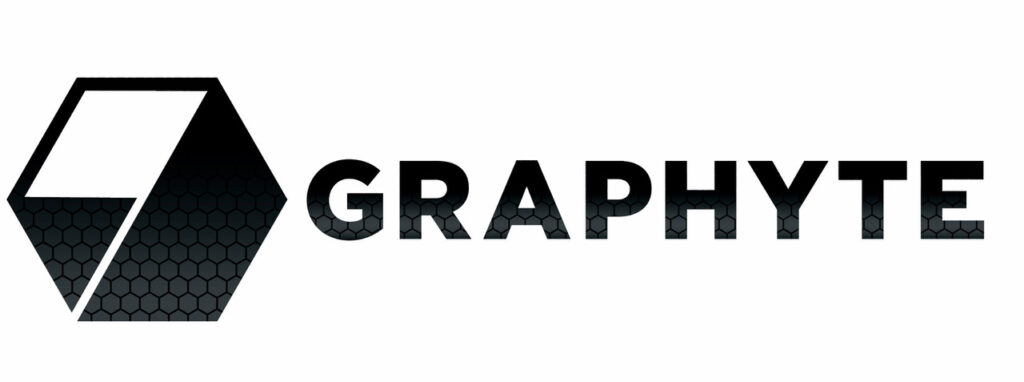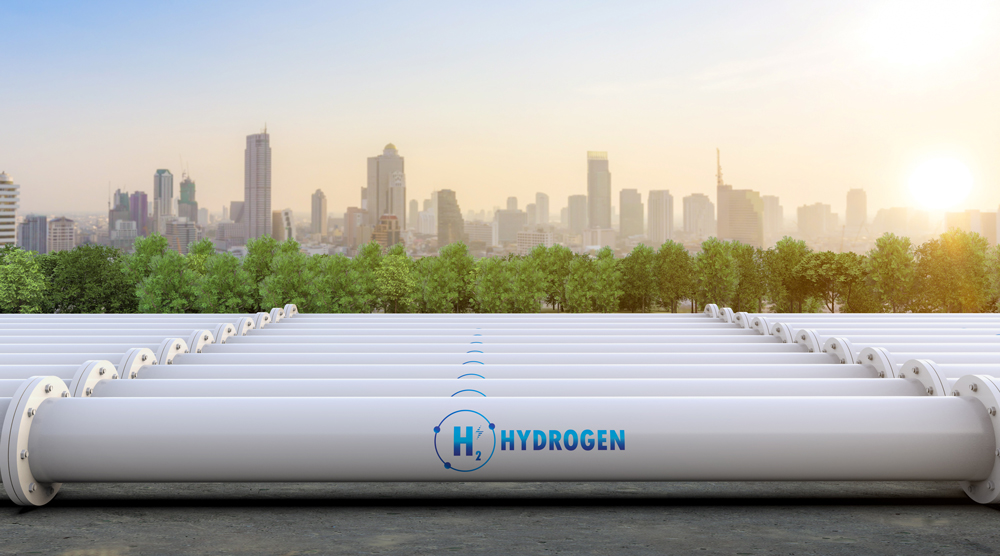While some companies make their money by pumping dizzying amounts of CO2 into the atmosphere, others have made it their mission to remove it. Sure, the natural method of doing so – trees – has existed for millions of years. But given the scale of climate change and rates of deforestation, they’re going to need some help; though the removal of carbon from the atmosphere is but a nascent industry today, it’s set to play a critical part in reaching net-zero emissions by 2050. And there’s a sizeable gap between climate goals set out in 2015’s Paris Agreement and how much carbon countries are planning on capturing or removing from the atmosphere. That’s what a growing group of companies, including a diverse set of startups, want to address.

Carbon Capture: A Brief Overview
Realizing that most businesses don’t want to bother with it themselves, they’ve developed methods of capturing or removing carbon and then selling that to other companies as carbon offsets or credits: a kind of allowance that permits the emission of one ton of CO2 per credit bought. It’s apparently a win all around; the capturers make money, there’s less carbon in the atmosphere, and the buyers can go green on the cheap. But the method’s future is now at a crossroads; though research shows that carbon capture or removal is crucial to mitigating climate change in the long run, the sector is still in its infancy. Can the startups close the gap?
There are two ways of dealing with carbon emissions: capturing them or removing them. The main difference is the source of the carbon. The capturing method involves snatching the emissions straight from where they’re created – like a factory or power plant – before they even hit the atmosphere, while removal (often called carbon dioxide removal, or CDR) deals with carbon already in the air.
Capturing
The techniques can be achieved through a few different methods. For carbon capture, CO2 resulting from combustion could be soaked up from the smoke on its way out of the factory (post-combustion capture). This is a popular method as it’s relatively uncomplicated for companies to integrate. Fossil fuels can also be burned in oxygen as opposed to air, making it easier to capture CO2 (oxyfuel method), or the gas can be extracted prior to combustion (pre-combustion capture).
Once it’s captured, the carbon might be stored underground or in natural carbon sinks (such as forests, soil, or the ocean), or transformed into useable materials like cement or jet fuel (as described by the Environmental Defense Fund).
Removing
For CDR (carbon dioxide removal), the most prolific method by far is ‘conventional CDR on land’ – or, as it’s more commonly known, trees. 99.9% of CDR today occurs through planting new forests or replenishing deforested areas, as well as storing carbon in soil (as reported by Carbon Brief). The issue with that, though, is that carbon doesn’t entirely exit the cycle; forest fires, increasingly common due to climate change, release all that toxicity back into the atmosphere. The remaining .1% of CDR is divided up between newfangled methods. One of these is bioenergy with carbon capture and storage (BECCS), wherein carbon from the atmosphere is captured by trees and other organic matter; these are then burned for energy, and the CO2 emitted is captured and stored underground. Another method is capturing carbon from the air artificially, known as Direct Air Capture (DAC).
The Growing Landscape of Carbon Capture Startups
In the last decade or so, carbon capture startups have seen a boom of interest. According to a report by Pitchbook, the sector saw $17.8 billion in venture capitalist (VC) investment over 1,122 deals in 2023 (just five years earlier in 2018, this was $2 billion across 335 deals), and a McKinsey report estimates that investment will reach $100 to $400 billion by 2030. In the US, the incentives are clearly there. The 2022 Inflation Reduction Act, for example, gives businesses juicy subsidies in exchange for carbon capture, utilization, and storage; companies can save $85 per ton of carbon stored in geologic formations, $60 per ton reused, and $180 per ton captured via DAC. This creates a perfect opportunity for carbon capture startups, who can mop up the carbon themselves and sell credits to polluting companies. Plus, as reported by Energyworld, consumers tend to prefer lower-carbon products. This has already led to the success of several companies including CarbonCure, which injects its captured carbon into concrete, mineralizing it while also making the concrete stronger.
Still, there are plenty of headaches that have yet to be dealt with. One of them is money. Though the possible $400 billion in investment predicted by McKinsey is not too shabby, the consulting firm estimates that this will be nowhere near enough to reach net zero by 2050; achieving this will require at least $500 billion in investment by 2030 (possibly even $2 trillion). There’s also the question of cost since carbon capture or removal projects and products will likely always be on the pricier side. McKinsey estimates that increased demand, incentives, and investment through governments and other sources are needed to further innovation necessary for delivering the services at scale.
5 Leading Carbon Capture Startups
1. Graphyte

Graphyte, founded in 2023, is probably the hottest thing among carbon removal startups. Its method is carbon casing – in which biomass is dried, compressed, sealed into bricks, and stored underground for the rest of time. The biomass used by the company – wood byproducts and low-value crop residue – is usually left to decompose on its own, thus releasing its stored carbon back into the atmosphere. Graphyte’s solution’s genius lies in its simplicity; by using no fancy equipment or extensive processes, the company can offer its service at under $100 per ton of carbon removed – cheaper than any other method. The no-fuss process – which Graphyte claims uses 10% of the energy required by other removal methods – also makes it possible to run the service anywhere in the world, with few barriers to scale things up. This US-based carbon removal startup is backed by Breakthrough Energy Ventures, an investment fund run by Bill Gates, and is already under contract with American Airlines to remove 10,000 tons of carbon on its behalf.
2. Living Carbon

Living Carbon, a carbon capture startup founded in 2019, has another deceptively simple solution: trees, but better. While trees are already crucial absorbers of carbon, most plants aren’t 100% effective at this, often giving off a little CO2 during the daytime (as reported by The Guardian). Living Carbon’s solution is to play around with genetics and circumvent that CO2 into spurring tree growth. A study done by the company on modified poplar trees showed that the method yielded up to 53% more growth, translating to up to 27% more CO2 absorption. Living Carbon plans to plant thousands of trees, both normal and boosted, across barren and deforested land across the US; it pays landowners to plant trees on their properties, then sells carbon credits collected from the forest to businesses wanting to offset their emissions.
3. Captura

While trees get all the glory for naturally removing carbon from the atmosphere, a less obvious mechanism is seawater, which absorbs 30% of yearly CO2 emissions (as reported by Science). Captura, a startup based in the US and founded in 2021, is one of a handful of startups aiming to use the ocean as a means for carbon removal. Its method involves running seawater through a system that separates the stuff, then pumps the clean water back into the ocean – essentially increasing the amount of emissions the ocean can soak up. The captured carbon will then be stored in underwater rock formations. Recently, Captura made the top 20 of the $100 million X-Prize competition for carbon capture backed by Elon Musk. For now, the company has been experimenting with its barge-mounted extraction mechanism and plans to open a facility in Norway for storing the carbon away for good.
4. Neustark

Swiss startup Neustark combines carbon capture with removal, causing little disruption for the industries involved. The 2019-founded company sources its CO2 from biogas plants, which it offers to fit with carbon-capturing tech that doesn’t interfere with the plant’s regular processes. Meanwhile, Neustark works with demolition companies to collect demolished concrete – which the company claims is the world’s biggest waste stream – later injecting it with the previously captured CO2. This results in mineralization, wherein the carbon becomes bound to the concrete and is stored more or less permanently. The concrete can then be reused to build streets, for example. As the company uses only waste materials for its product, it’s a minimally invasive yet highly effective procedure; one of its plants can store 1,000 tons of CO2 in concrete per hour, which is the same as 50 trees do in a year. The effort is ramping up; as of April 2024, Neustark operates 18 capture and storage sites across Europe, with plans for 30 more (as reported by Forbes).
5. Heirloom

US-based carbon capture startup Heirloom’s focus is on the more elusive DAC (Direct Air Capture), but its idea is simple enough: a sponge for soaking up CO2 from the air. The sponge in question is limestone, which is made from CO2 and calcium hydroxide. The process starts by heating the limestone to a cool 1,650 degrees Fahrenheit (as reported by The New York Times), which separates the two; the CO2 is pumped off and stored. Then, the remaining calcium hydroxide – commonly referred to as lime – is spread out on trays and left alone for three days, during which it soaks up CO2 from the air. It’s then heated again to remove the gas, and the cycle continues. In 2023 – three years after its founding – the company opened the US’s first commercial DAC facility, which it claims captures 1,000 tons of carbon per year. It works with carbon concrete company CarbonCure to use the CO2 it captures but also aims to store the stuff underground in the future. Heirloom now plans to open a set of two plants in Louisiana and ultimately plans to remove 200,000 tons of CO2 a year once its systems are fully operational.
Why Might Businesses Be Interested In Carbon Removal Startups?
In theory, carbon removal startups provide an invaluable product to companies; carbon offsets help them snag subsidies and boost their public image without having to invest in developing these technologies themselves. As companies face increasing pressure from consumers to go green, purchasing carbon credits or offsets is a quick and easy way to present a squeaky-green image; the method is especially lucrative for industries whose processes are difficult to make environmentally friendly. The $2 billion voluntary carbon credit market, especially prominent in the US, is proof of this method’s popularity.
But often, companies ‘greenwashing’ through carbon credits only goes skin-deep. Generally, companies using carbon credits to offset emissions are frequently criticized by scientists as an excuse to not mitigate their own emissions (as reported by The Guardian). While carbon capture is one part of reaching climate goals – the most important bit being reducing emissions in the first place – many companies hide behind purchasing credits while not doing much else in the way of mitigating their emissions. To make things worse, these credits aren’t always kosher; a significant chunk of the allegedly climate-friendly projects some of the world’s biggest corporations invest in are ‘likely junk’, meaning that their impacts in emissions reductions are essentially worthless (as reported by The Guardian).
The Future of Carbon Capture Startups
Though the above scenario doesn’t exactly bode well in terms of climate health, it shows that the demand for carbon credits is there; it’s the fast and easy way for companies to give a nod to climate change without fundamentally changing their approach. Considering this, plus governmental incentives, it’s not surprising that McKinsey estimates the market to be worth $300 billion to $1.2 trillion by 2050. As such, its landscape will probably be quite different to today’s. While they only constitute a tiny part of current removals, technology-based removals (TBR) – as opposed to nature-based removals (NBR) – are slated to drop in costs and grow in significance, according to reports by McKinsey and State of CDR. While NBR will remain prominent for now, it is TBR that will prove critical for maintaining net zero throughout the century.
The State of CDR report notes that the coming decade is especially important for such newer methods; its effectiveness in the second half of the century depends on how well it can develop throughout the next ten years. While research, public awareness, and the number of carbon capturing and removal startups are generally on the rise, funding is still vastly insufficient to reach climate goals: carbon removal startups account for just 1.1% of climate tech funding. So while its demand and importance are clear, it remains to be seen just how much of an impact it can have.
Read also: Top 5 Climate Tech VCs & Investors in 2024
Bottom Line
At the heart of carbon tech lies a paradox of sorts. On one hand, it needs a hefty infusion of investment and interest to contribute to climate goals; on the other, it shouldn’t rely on too much as a means of emissions mitigation by companies who should be worrying about reducing their outputs instead. As the young industry slowly takes flight, it’s hard to tell which startups will end up making tech that matters – or become ‘junk’ that makes no difference whatsoever. Today, many apparent carbon capture or removal methods fall into the second category, their impacts, methodologies, and measurements are flaky. Novel methods led by startups might help change that. But, as noted by Erika Lennon, senior attorney at the Centre for International Environmental Law (as reported by The Guardian), it’s no solution to climate change – used incorrectly, it can even be damaging. ‘Racking up carbon credits doesn’t make you a climate leader,’ she says. ‘Cutting fossil fuels does.’






